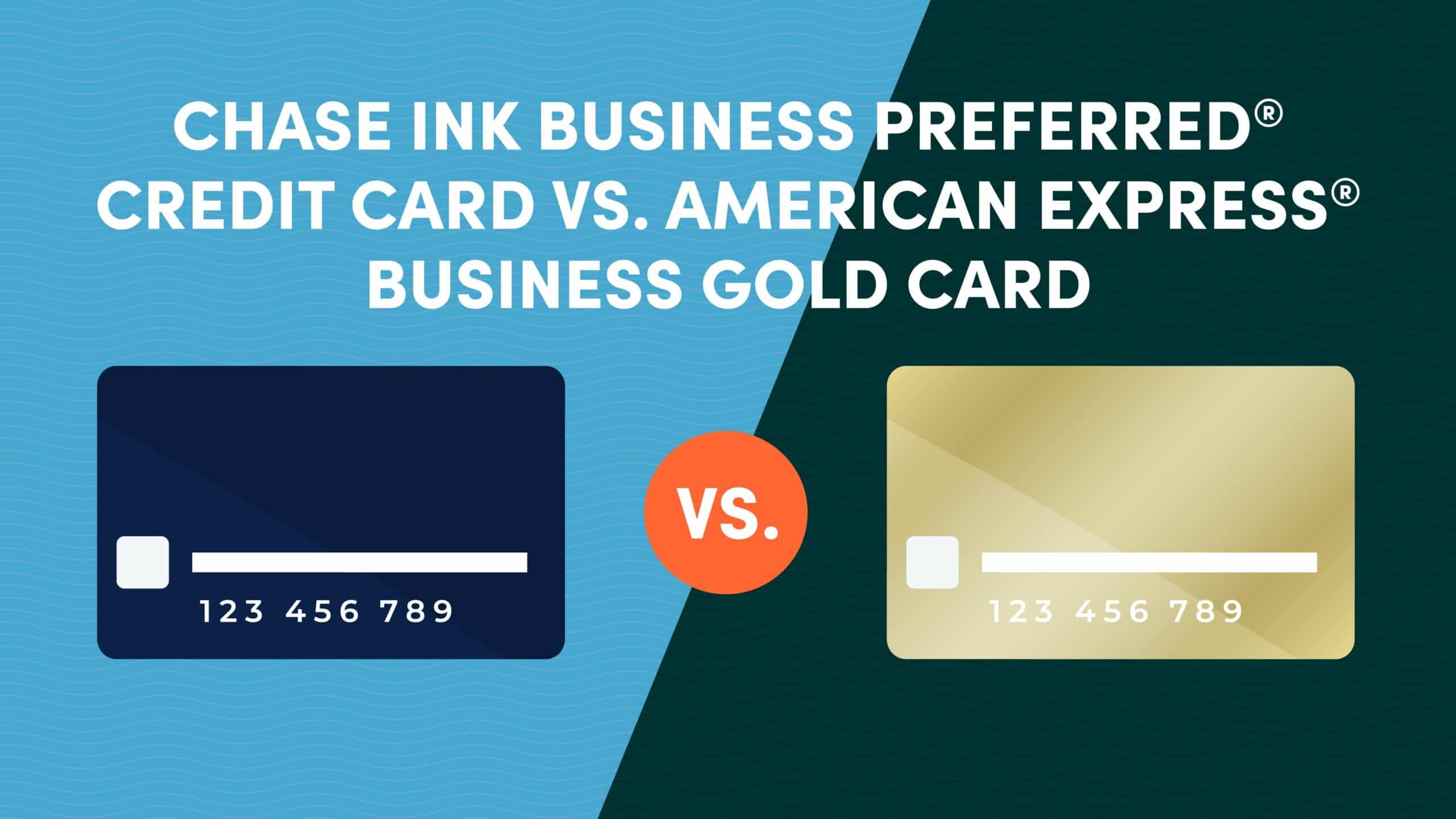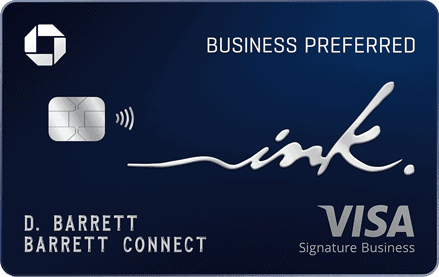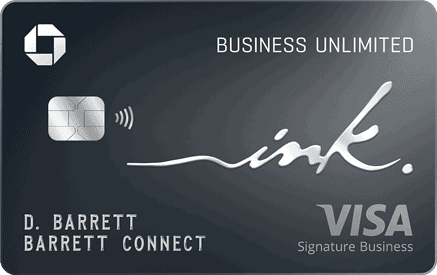
10xTravel is part of an affiliate sales network and receives compensation for sending traffic to partner sites, such as CreditCards.com. This site may earn compensation when a customer clicks on a link, when an application is approved, or when an account is opened. This compensation may impact how and where links appear on this site. This site does not include all financial companies or all available financial offers. Terms apply to American Express benefits and offers. Enrollment may be required for select American Express benefits and offers. Visit americanexpress.com to learn more. All values of Membership Rewards are assigned based on the assumption, experience and opinions of the 10xTravel team and represent an estimate and not an actual value of points. Estimated value is not a fixed value and may not be the typical value enjoyed by card members.
Note: Some of the offers mentioned below may have changed or may no longer be available. The content on this page is accurate as of the posting date; however, some of our partner offers may have expired. You can view current offers here.
All information about Ink Business Preferred® Credit Card has been collected independently by 10x Travel. Ink Business Preferred® Credit Card is no longer available through 10xtravel.com.
Finding the right business card for your small business can improve the rewards that business earns for its expenses, help you track your employee spending as well as your own business spending and even secure valuable benefits for you and your employees. When it comes to choosing which business card is ideal for your business, there are many factors to consider.
Two of the most popular business cards available from two of the largest issuers in the U.S. are the American Express® Business Gold Card (see rates & fees) and the Chase Ink Business Preferred® Credit Card. These two cards are different in terms of their annual fees, benefits and spending bonuses.
In general, the Ink Business Preferred Card is more of a middle-tier card with its manageable annual fee of $95 and its basic benefits. The Amex Business Gold Card, on the other hand, is more of a premium credit card with a higher annual fee and more lucrative benefits.
In deciding between these two cards, it really comes down to whether the Amex Business Gold Card’s bonuses and benefits are worth its high annual fee or whether you’d be better off paying a lower annual fee and receiving less benefits with the Ink Business Preferred Card.
To help you make this comparison, let’s break down each aspect of both of these cards, and, hopefully, you’ll be able to decide which of these cards would be most beneficial to your business.

Chase Ink Business Preferred® Credit Card
100,000
bonus points
after you spend $8,000 on purchases in the first 3 months from account opening.
Annual Fee: $95
American Express® Business Gold Card
100,000
Membership Rewards® Points
after spending $15,000 in the first 3 months. Terms apply.
Annual Fee:
$375
Getting to Know the Contenders
Before looking at the features of these two credit cards in depth, let’s briefly look at these two cards side-by-side. As you’ll notice, these two cards have different annual fees, spending bonuses and other benefits.
The following table includes all of the most important features of these two business credit cards.
| Ink Business Preferred® Credit Card | American Express® Business Gold Card | |
|---|---|---|
| Annual fee | $95 | $375 (see rates & fees) |
| Spending bonuses | • 3X points on the first $150,000 in combined spending per cardmember year in the following categories: travel, shipping purchases, advertising purchases made with social media sites and search engines, internet, cable and phone services • 1X point on all other purchases | • 4X points on the first $150,000 in combined spending per calendar year in your top two eligible categories (see below) • 3X points on flights and prepaid hotel bookings made through AmexTravel.com • 1X point on all other purchases |
| Credits and added value | • Points are worth more when you redeem thru Chase Travel℠ | • Up to $240 in annual statement credits ($20 monthly) for eligible U.S. purchases at FedEx, Grubhub and office supply stores (enrollment required) • $155 in annual statement credits for monthly Walmart+ membership fee (subject to auto-renewal) • $100 experience credit when staying at The Hotel Collection (booked through AmexTravel.com) |
| Insurances and protections | • Trip cancellation/interruption insurance up to $5,000 per person and up to $10,000 per trip • Trip delay insurance up to $500 per person • Auto rental collision damage waiver up to the actual cash value of the vehicle • Cell phone protection up to $1,000 per claim (maximum of three claims per 12-month period) • Purchase protection for 120 days up to $10,000 per claim and up to $50,000 per account • Extended warranty of one additional year on top of the manufacturer’s warranty (only manufacturer’s warranty is three years or less) | • Trip cancellation/interruption insurance up to $10,000 per trip and up to $20,000 per 12-month period • Trip delay insurance up to $300 per claim (maximum of two claims per 12-month period) • Baggage insurance up to $500 per trip for checked baggage and up to $1,250 per trip for carry-on baggage (except high-risk items, which are covered up to $250 per trip) • Car rental loss and damage insurance up to $50,000 per claim • Cell phone protection up to $8000 per claim (maximum of two claims per 12-month period) • Purchase protection for 90 days up to $1,000 per claim and up to $50,000 per calendar year • Extended warranty of one additional year on top of the manufacturer’s warranty (only manufacturer’s warranty is five years or less) |
The American Express Business Gold Card offers 4X Membership Rewards points in your top two spending categories per billing cycle up to $150,000 in combined spending per calendar year. The following categories are eligible for this spending bonus:
- Online, television and radio advertising purchase made from media providers in the U.S.
- Purchases made from electronic goods retailers or software and cloud system providers in the U.S.
- Restaurants in the U.S. (including takeout and delivery)
- Gasoline at gas stations in the U.S. (not including gasoline sold at superstores, supermarkets and warehouse clubs)
- Transit purchases (including trains, taxi cabs, ride-hailing services, ferries, tolls, parking, buses and subways)
- Wireless telephone service from U.S. providers
Your top two spending categories are calculated each billing period. So, for instance, while your top two spending categories in one billing period may be transit and wireless telephone service, your top two categories in the next billing period might be gasoline purchases and restaurants.

As you can see, while the spending bonuses offered by these two cards are fairly comparable, the Amex Business Gold Card comes with significantly better benefits than the Ink Business Preferred Card. However, those benefits come at a much higher cost as the Amex Business Gold has a much higher annual fee than the Ink Business Preferred.
Another major thing to consider when deciding between these two cards that’s not included in the table above is their welcome bonuses. Both of these business credit cards offer welcome bonuses of tens of thousands of points for new cardmembers who spend a certain amount of money on their card in a certain period of time after account opening. These welcome bonuses change often, but the difference between the Ink Business Preferred’s and the Amex Business Gold’s welcome offers can vary significantly.
Additionally, it’s also important to consider the transfer partners of both the Chase Ultimate Rewards program and the American Express Membership Rewards program. Both programs have different lists of transfer partners, which can significantly impact the amount of value you can get out of your rewards points.
All of this and more will be explained thoroughly later in this article.
Head-to-Head: Chase Ink Business Preferred vs. American Express Business Gold
Now that you’re familiar with all of the major features of each of these business cards, let’s take a closer look at each feature and decide which card has the advantage in each category.
Earning Potential: Which Card Offers the Best Rewards?
In comparing the spending bonuses offered by both the Ink Business Preferred and the Amex Business Gold, we need to keep in mind that the Amex Business Gold Card charges a significantly higher annual fee than the Ink Business Preferred. Thus, we must consider these spending bonuses relative to each card’s annual fee.
The Amex Business Gold offers 4X points on the first $150,000 in spending per calendar year on your top two eligible spending categories, 3X points on flights and hotels booked through AmexTravel.com, and 1X point on all other purchases.
In comparison, the Ink Business Preferred offers 3X points on the first $150,000 in spending per cardmember year in four major business spending categories and 1X point on all other purchases.
The Amex Business is most likely better for small-business owners who spend a lot of money in one or two major business expense categories.
For instance, if the majority of your expenses are for gasoline and restaurants and the rest of your expenses are fairly negligible, then you’ll earn 4X points in those two categories and 1X points in your other spending categories. However, if your business spending is distributed pretty evenly between shipping, advertising, internet, phone and cable services as well as travel, then the 3X points offered in these categories might be better for you.
It’s also worth noting that if you’re willing to make your hotel and flight purchases through AmexTravel.com, then you can also earn 3X points on those purchases with the Amex Business Gold Card.

On the other hand, the limited-time 5X points on Lyft rides offered by the Ink Business Preferred is potentially valuable for business owners who utilize ride-hailing services often. However, these bonuses are only guaranteed through March 2025. There is a chance that Chase may continue to offer this bonus after that, but it hasn’t been confirmed.
All in all, the Amex Business Gold Card offers better spending bonuses for most small business owners. However, the question of which of these cards offers better spending bonuses for your business depends on your specific spending patterns. We recommend looking at your business expenses from the previous year and calculating how many points you’d earn with each card.
Welcome Aboard: Comparing Welcome Bonuses and Their Value
As stated above, both the Ink Business Preferred Card and the American Express Business Gold Card have welcome offers for new cardmembers who spend a certain amount of money in a certain period of time after account opening. These bonuses are a great way to rack up a ton of rewards points quickly and are often enough to purchase several flights or multiple hotel nights.
The spending requirements and the number of points for each of these welcome offers change frequently over time.
Here’s the current welcome offer from the Ink Business Preferred Card:

Chase Ink Business Preferred® Credit Card
100,000
bonus points
after you spend $8,000 on purchases in the first 3 months from account opening.
Annual Fee: $95
Here’s the current welcome offer from the American Express Business Gold Card:
American Express® Business Gold Card
100,000
Membership Rewards® Points
after spending $15,000 in the first 3 months. Terms apply.
Annual Fee:
$375
The difference between these bonuses can often be tens of thousands of points, which equate to hundreds of dollars. So, before you decide between these two cards, it’s important to take these welcome bonuses into consideration.
Additional Benefits: Statement Credits and More
When it comes to additional benefits, the Amex Business Gold Card has a clear advantage, which is to be expected since it charges $280 more annually than the Ink Business Preferred Card.
The Amex Business Gold offers up to $20 in monthly statement credits toward eligible purchases from FedEx, Grubhub or office supply stores. To receive these statement credits, you must enroll in the offer. These credits can be applied to any U.S. office supply store.
The Amex Business Gold Card also offers $12.95 in statement credits per month to cover the cost of one Walmart+ membership on your account. That equates to $155 in annual statement credits if you keep your membership to Walmart+, which includes free delivery from your nearest Walmart store, free shipping with no minimum order (free shipping excludes most marketplace items), member savings on fuel, video streaming from Paramount+ (Paramount+ Essential plan only, separate registration required), returns from home and more.
If you use both of these statement credits to the fullest every year, you’ll get $395 in value, which is $20 higher than the Amex Business Gold Card’s annual fee. So, if you’ll take full advantage of these statement credits, then the Amex Business Gold Card is almost certainly the better option for your business.

Although the Ink Business Preferred doesn’t come with any statement credits, points are worth more when you redeem thru Chase Travel℠.
For instance, let’s say you wanted to buy a flight that cost $1,000 through the Chase Travel℠ portal. If you didn’t have the Ink Business Preferred Card, then this flight would cost you 100,000 points. However, with the Ink Business Preferred Card , you’d be required to redeem 80,000 points for this same flight.
This is an excellent benefit if you plan on spending a lot of your points on travel through Chase Travel℠. And, while you can get more value out of your Chase points by transferring them to partner loyalty programs, redeeming through the travel portal is simple, easy and provides solid value.
Both the Ink Business Preferred and the Amex Business Gold offer several other valuable benefits, such as trip cancellation/interruption insurance, trip delay insurance, auto rental insurance, cell phone protection, purchase protection and extended warranty. However, these benefits are more or less the same between these two cards, so we’re not going to compare them in this article.
The Annual Fee Factor: Is It Worth the Cost?
One major difference between these two business cards is their annual fees. While the Ink Business Preferred Card charges an annual fee of $95, the Amex Business Gold Card has an annual fee of $375. So, the Amex Business Gold charges $280 more per year than the Ink Business Preferred.
For some business owners, the Amex Business Gold’s higher membership fee may put this card out of reach. However, if you can afford to pay the $375 annual fee, you can easily make up for that fee with this card’s welcome bonus, spending bonuses and other benefits.
The Ink Business Preferred Card’s $95 annual fee can also be offset fairly easily through its welcome bonus and spending bonuses, as points are worth more when you redeem thru Chase Travel℠.

Transfer Partners: Maximizing Value
When comparing the Chase Ink Business Preferred Card to the Amex Business Gold Card, we need to examine the value of Chase Ultimate Rewards points versus the value of Amex Membership Rewards points.
Regardless of which of these currencies you use, the best way to maximize the value of your points is to redeem them through transfer partners. By transferring points to airline and hotel loyalty programs, you can often find redemptions that offer several cents per point in value, which is much better than the value you can get out of points by redeeming directly through Chase Travel℠ or American Express Travel®.
The Chase Ultimate Rewards program currently has 14 transfer partners, all of which offer a 1:1 transfer ratio. That means that, if you transfer 10,000 Chase points to any of Chase’s transfer partners, you’ll receive 10,000 points in that program’s currency.
Here’s the list of Chase’s transfer partners:
Among the transfer partners listed above, some of the programs that tend to offer the best value are World of Hyatt, Air Canada Aeroplan, Virgin Atlantic Flying Club and United Mileage Plus.
The American Express Membership Rewards program has 21 transfer partners, some of which don’t offer a 1:1 transfer ratio.
Here’s a complete list of the current transfer partners of American Express:
| Aer Lingus AerClub | Ethiad Guest |
| Aeroméxico Rewards (1:1.6 transfer ratio) | Hawaiian Airlines HawaiianMiles |
| Air Canada Aeroplan | Hilton Honors (1:2 transfer ratio) |
| Air France-KLM Flying Blue | Iberia Plus |
| ANA Mileage Club | JetBlue TrueBlue (5:4 transfer ratio) |
| Avianca LifeMiles | Marriott Bonvoy |
| British Airways Executive Club | Qantas Frequent Flyer |
| Cathay Pacific Asia Miles | Qatar Airways Privilege Club |
| Delta SkyMiles | Singapore Airlines KrisFlyer |
| Choice Privileges | Virgin Atlantic Flying Club |
| Emirates Skywards |
Among the transfer partners listed above, the programs that tend to offer the most value are Air Canada Aeroplan, ANA Mileage Club, Avianca LifeMiles and Virgin Atlantic Flying Club.
While the Amex Membership Rewards has more transfer partners, the Chase Ultimate Rewards program may offer higher-value transfer partners. In particular, the World of Hyatt program (which is a transfer partner of Chase but not Amex) is typically considered one of the best hotel rewards programs in the industry.
However, you can also get great value by transferring Amex points to the Hilton Honors program at a 1:2 ratio. That means that you’ll receive 2,000 Hilton points for every 1,000 Amex points you transfer.
Overall, it’s difficult to say which of these programs has a better list of transfer partners. It depends heavily on which travel loyalty programs you’re most likely to use. For instance, if you frequently stay at Hilton hotels, then having access to Hilton Honors points through Amex Membership Rewards is a major advantage.

Choosing Your Ideal Business Card
Before you choose to open either the Chase Ink Business Preferred or the Amex Business Gold, you should consider all of the aspects of both cards that we’ve discussed above. We recommend calculating the total value that each card would provide you per year and then subtracting that card’s annual fee to find the net value of each card per year.
For instance, let’s say that you believe based on your expenses from the previous year that the Amex Business Gold’s spending bonuses would provide you with about $300 in value per year and its other benefits would provide a value of about $250 per year. That means that this card would provide a gross value of $550 per year. However, if we subtract the $375 annual fee, the net value provided by the Amex Business Gold is about $175 per year.
Perform the same type of calculation for the Ink Business Preferred Card and compare the value per year provided by each card to see which one is a better fit for your business. However, it’s also important to factor the welcome bonuses available from each card into your calculations.
You should also keep in mind that the Ink Business Preferred Card and the Amex Business Gold Card are far from the only options for business cards in this price range.
For instance, the Capital One Venture X Business ($395 annual fee) is a great option if you’re willing to pay a slightly higher annual fee than the Amex Business Gold. If you want to earn airline miles directly for our business spending, it might be worth looking into United℠ Business Card ($150 annual fee).
All in all, although there are a lot of business credit cards out there, the Ink Business Preferred and the Amex Business Gold are two of the best all-around options. These cards offer excellent value for their respective annual fees and can help you earn great rewards for your business spending.
The Bottom Line
Adding a business card to your wallet (and issuing employee cards) can help you earn valuable rewards on your business expenses. Business cards are also a great way to separate your business expenses from your personal expenses. So, if you don’t currently have a business credit card for your small business, you could be missing out on thousands of dollars in rewards and savings.
When it comes to business cards that are good for most businesses, the Chase Ink Business Preferred and the Amex Business Gold are near the top of the list. These two cards are different in terms of their annual fees, spending bonuses and other benefits. So, in comparing these two cards, it’s important to compare each aspect of these cards side-by-side as we’ve done above.
By looking at each card’s features (the spending bonuses, welcome bonuses, other benefits, annual fees and more), you can calculate which of these cards would be better for your business based on your past spending.
Once you choose the right business credit card for your wallet, you can start earning rewards points for your business spending and redeeming those points for award flights, free night stays at hotels and more.
Eligibility and Benefit level varies by Card. Terms, Conditions, and Limitations Apply. Please visit americanexpress.com/benefitsguide for more details. Underwritten by Amex Assurance Company.
New to the world of points and miles? The Chase Sapphire Preferred® Card is the best card to start with.
With a bonus of 75,000 bonus points after you spend $5,000 on purchases in the first 3 months from account opening. , 5x points on travel booked through the Chase TravelSM Portal and 3x points on restaurants, streaming services, and online groceries (excluding Target, Walmart, and wholesale clubs), this card truly cannot be beat for getting started!
after you spend $8,000 on purchases in the first 3 months from account opening.
Annual Fee: $95
after spending $15,000 in the first 3 months. Terms apply.
Annual Fee:
$375
Editors Note: Opinions expressed here are author’s alone, not those of any bank, credit card issuer, hotel, airline, or other entity. This content has not been reviewed, approved or otherwise endorsed by any of the entities included within the post.










